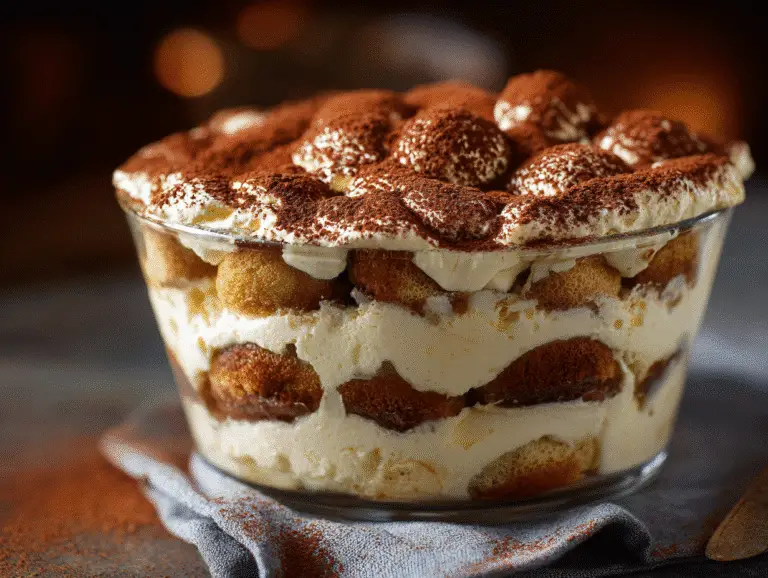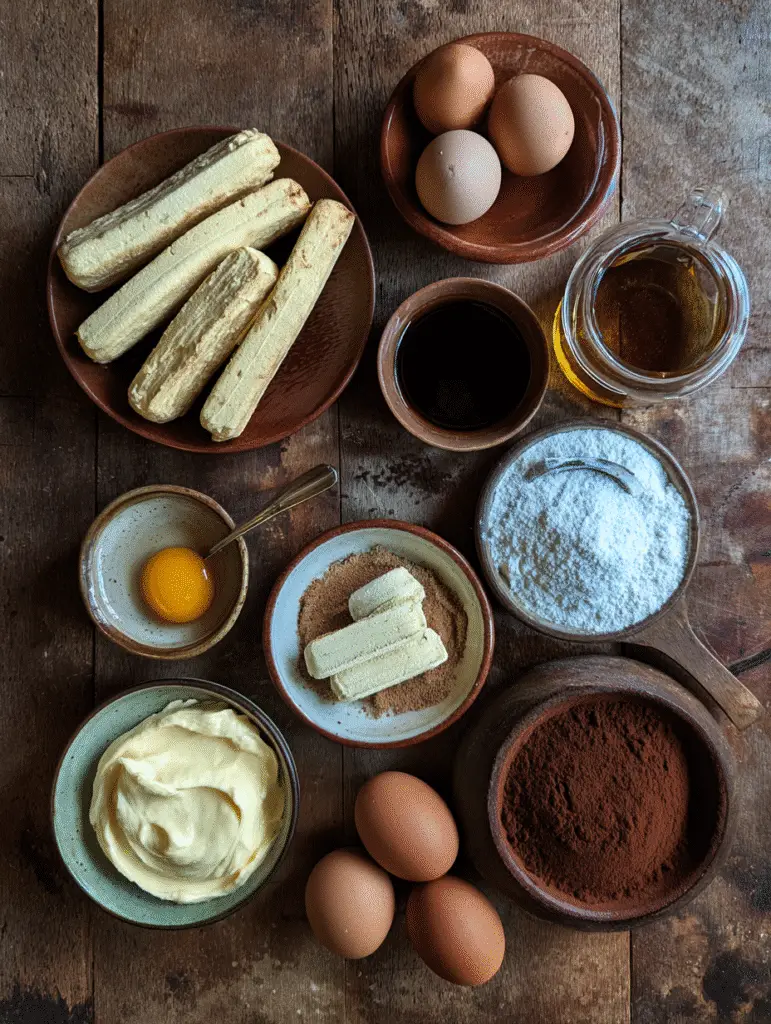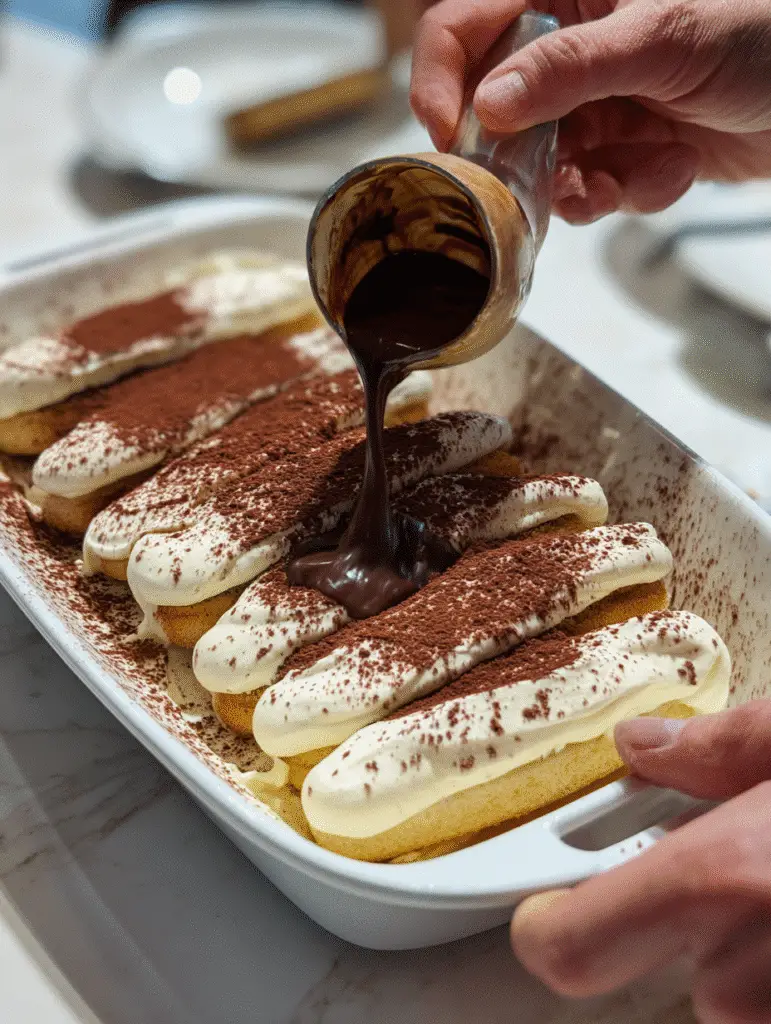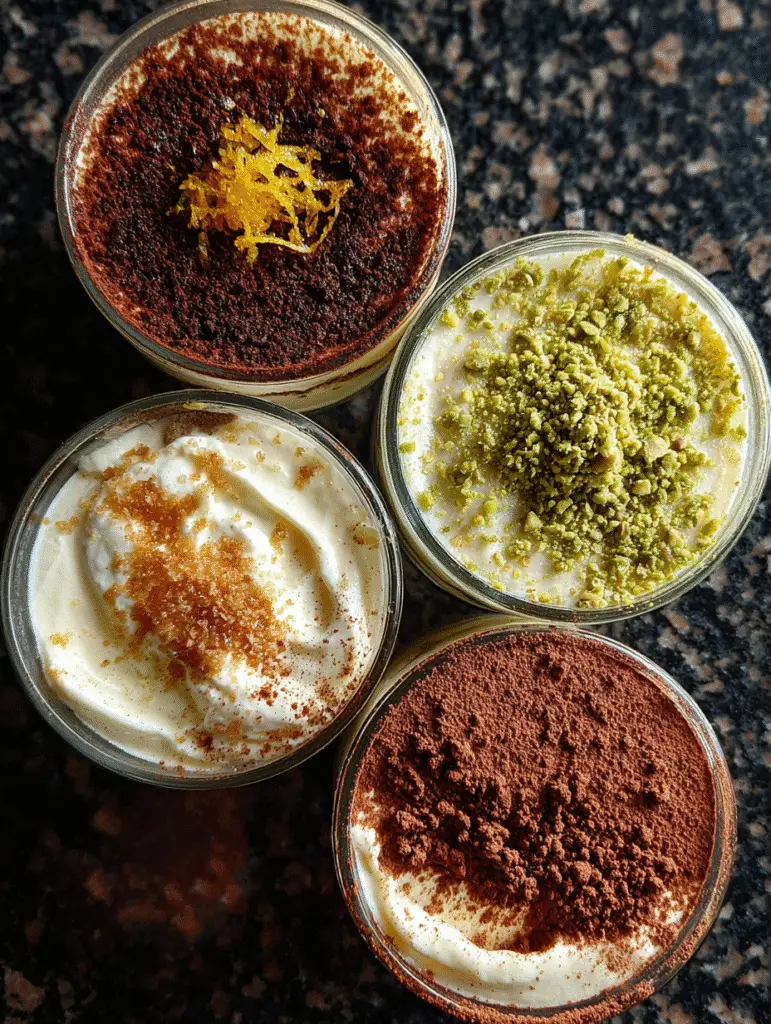BEST Classic Italian Tiramisu is the ultimate dessert that captures the heart of Italy—layered, creamy, and delicately bold with flavors of espresso and cocoa. Whether served at elegant dinner tables in Rome or enjoyed at home after a family meal, this timeless dessert never fails to impress. But what truly makes the BEST Classic Italian Tiramisu stand out from the rest?
In this comprehensive guide, we’ll explore the secrets behind creating the most authentic and flavorful tiramisu. You’ll learn the origins of this iconic treat, what ingredients matter most, and how to avoid the most common tiramisu-making mistakes. From selecting the perfect mascarpone to mastering the right soak for your ladyfingers, every detail is covered so you can recreate the BEST Classic Italian Tiramisu in your own kitchen.
We’ll also answer burning questions like:
- What’s the secret to a good tiramisu?
- What alcohol do Italians really use?
- Where can you find the world’s best tiramisu?
- What region of Italy is famous for this classic dessert?
Whether you’re a home cook or a passionate foodie, this article will be your go-to resource for mastering every layer of this decadent delight. And if you’re in the mood for a unique spin, discover great ideas like Easy Pistachio Tiramisu – A Creamy Twist on a Classic Dessert for a modern twist on tradition.
Get ready to indulge in the BEST Classic Italian Tiramisu journey—from its roots in Veneto to the espresso-soaked perfection on your plate.
Table of Contents

BEST Classic Italian Tiramisu
A timeless Italian no‑bake dessert layered with espresso‑soaked ladyfingers, creamy mascarpone custard, and a dusting of cocoa—elegant, bold, and authentic.
- Total Time: PT6H35M
- Yield: 8 servings 1x
Ingredients
- 16 oz full‑fat mascarpone cheese
- 6 large egg yolks
- ¾ cup granulated sugar
- 1½ cups freshly brewed espresso, cooled
- 2–3 tbsp Marsala wine or dark rum (optional)
- 1 package Italian savoiardi (ladyfingers)
- Unsweetened cocoa powder, for dusting
- (Optional) ¾ cup heavy cream, whipped
Instructions
- Make zabaglione: Whisk egg yolks & sugar over simmering water until pale & thick (about 8–10 min). Cool slightly.
- Make mascarpone cream: Gently fold mascarpone into cooled yolks; if using, fold in whipped cream for extra lightness.
- Prep espresso soak: Mix cooled espresso with Marsala or rum. Dip each ladyfinger quickly (1–2 sec per side).
- Layer: In a 9×13″ dish, place a layer of dipped ladyfingers, top with mascarpone cream. Repeat to build 2 layers, ending with cream.
- Chill: Cover and refrigerate at least 6 hours, preferably overnight.
- Serve: Dust generously with cocoa powder just before serving; garnish with chocolate shavings if desired.
Notes
Use high‑quality mascarpone and strong espresso; dip ladyfingers briefly (1–2 sec) to avoid sogginess. Opt to chill overnight for best structure and flavor. Store covered in fridge up to 3 days.
- Prep Time: PT25M
- Cook Time: PT10M
- Category: Dessert
- Method: No Bake
- Cuisine: Italian
- Diet: Vegetarian
Nutrition
- Serving Size: 1 slice (1/8 of 9×13″)
- Calories: 410
- Sugar: 18g
- Sodium: 65mg
- Fat: 32g
- Saturated Fat: 20g
- Unsaturated Fat: 10g
- Trans Fat: 0g
- Carbohydrates: 26g
- Fiber: 1g
- Protein: 6g
- Cholesterol: 210mg
The Origins of the BEST Classic Italian Tiramisu
The Birthplace of Tiramisu: A Tale from Veneto
The origins of the BEST Classic Italian Tiramisu trace back to the Veneto region in Northern Italy, specifically the charming city of Treviso. According to food historians, tiramisu was first served in the 1960s at a restaurant called “Le Beccherie.” This version, rich in mascarpone and espresso, quickly won the hearts of Italians and became a symbol of Italian hospitality and flavor.
But tiramisu isn’t just a dessert—it’s a cultural experience. The name itself means “pick me up,” referring to the energizing mix of espresso and sugar. This symbolism was especially appreciated in post-war Italy, where morale-boosting treats were embraced wholeheartedly.
Though there are competing origin stories from regions like Friuli-Venezia Giulia, most experts agree that Veneto holds the strongest claim to birthing what we now recognize as the BEST Classic Italian Tiramisu.
How Tiramisu Became a Global Icon
It didn’t take long for tiramisu to spread beyond Italy’s borders. By the 1980s, it appeared on dessert menus across Europe and the United States. Its appeal? A no-bake, make-ahead treat with layers of texture and taste—espresso-drenched ladyfingers, whipped mascarpone, and a dusting of cocoa powder.
Chefs worldwide began adding their own touches, from fruit compotes to flavored liqueurs, yet the traditional version remained the gold standard. Thanks to cookbooks, travel shows, and global tourism, the BEST Classic Italian Tiramisu became a universally loved dessert.
Even today, tiramisu continues to evolve, but the original recipe—anchored in Italian tradition—still reigns supreme.
Ingredients That Define the BEST Classic Italian Tiramisu

Mascarpone: The Creamy Heart of the Classic
No ingredient plays a more central role in the BEST Classic Italian Tiramisu than mascarpone. This rich, silky Italian cheese gives tiramisu its signature creamy texture and subtle tang. Authentic recipes always opt for full-fat mascarpone, avoiding cream cheese substitutes that dilute the classic flavor.
Mascarpone acts as the canvas that balances bold espresso and sweet ladyfingers. It’s traditionally combined with egg yolks and sugar to form the luscious filling. For added stability and richness, some modern versions incorporate whipped cream—though purists often stick to the original egg-based method.
Espresso: Bold Flavor with Italian Soul
A defining feature of the BEST Classic Italian Tiramisu is its robust espresso base. True Italian tiramisu never uses drip coffee or instant granules—only strong, freshly brewed espresso will do. This coffee is cooled, then used to soak the ladyfingers just long enough to infuse flavor without turning them soggy.
Some bakers spike the espresso with liqueur, adding depth and warmth. Whether or not alcohol is used, espresso brings a bold contrast to the sweetness of the mascarpone mixture and cocoa topping.
Ladyfingers (Savoiardi): The Perfect Sponge
Ladyfingers, or savoiardi, are essential to creating the signature layered structure of the BEST Classic Italian Tiramisu. Their dry, airy texture makes them ideal for absorbing espresso while maintaining a delicate bite.
Choose high-quality Italian savoiardi if possible—they’re sturdier and less sweet than store-brand imitations. Dipping each cookie briefly in espresso allows them to soften without falling apart, preserving that perfect balance between firmness and creaminess in each forkful.
Cocoa Powder: The Final Touch
Finishing the tiramisu with a generous dusting of unsweetened cocoa powder adds the final layer of flavor and elegance. The slight bitterness of cocoa offsets the creamy filling, giving every bite complexity and contrast.
Some chefs take it a step further by adding shaved dark chocolate or a sprinkle of instant espresso powder—but the classic version stays true to its minimalist roots.
Optional But Traditional: Alcohol in Tiramisu
While alcohol isn’t mandatory, many recipes for the BEST Classic Italian Tiramisu include a splash of Marsala wine, dark rum, or coffee liqueur like Kahlúa or Tia Maria. These additions enhance the coffee flavor and provide a subtle, boozy warmth that elevates the dessert.
Traditional Italian households tend to favor Marsala, a fortified wine with sweet and nutty notes. It’s typically mixed into the egg yolk mixture or the espresso soak, depending on the recipe.
Don’t miss our No Bake Salted Caramel Cheesecake Cups – The Ultimate Easy Dessert Treat for another creamy, crowd-pleasing dessert that’s a breeze to prepare.
Step-by-Step Guide to Making the BEST Classic Italian Tiramisu

Step 1: Gather and Prep the Ingredients
Before diving into the process, make sure you have everything prepped and ready to go. Here’s what you’ll need for an authentic BEST Classic Italian Tiramisu:
| Ingredient | Quantity |
|---|---|
| Mascarpone cheese | 16 oz (full-fat) |
| Large egg yolks | 6 |
| Granulated sugar | ¾ cup |
| Heavy cream (optional) | ¾ cup (for added lightness) |
| Espresso (freshly brewed) | 1½ cups, cooled |
| Savoiardi (Italian ladyfingers) | 1 package |
| Marsala wine or dark rum (optional) | 2–3 tablespoons |
| Unsweetened cocoa powder | To dust |
Make sure the espresso is cool before dipping the ladyfingers to prevent them from getting too soggy.
Step 2: Whip the Egg Yolks and Sugar
In a heatproof bowl set over simmering water, whisk the egg yolks and sugar until the mixture thickens and turns pale. This forms the base custard for the creamy filling. Once thick, remove from heat and let it cool slightly.
This step is essential for achieving the smooth texture and safety of the raw eggs, often debated in modern tiramisu recipes.
Step 3: Incorporate Mascarpone and Whipped Cream
Once the yolk mixture has cooled, gently fold in the mascarpone until the mixture is smooth and lump-free. If you’re using heavy cream, whip it separately until stiff peaks form, then fold it into the mascarpone mixture. This will give your BEST Classic Italian Tiramisu a light, mousse-like texture without sacrificing richness.
Step 4: Prepare the Espresso Soak
Combine the cooled espresso with your liqueur of choice (Marsala wine or dark rum). Quickly dip each savoiardi biscuit into the espresso mixture—no more than 1-2 seconds per side. The goal is to moisten, not drench.
Over-soaking is one of the most common mistakes that ruins the texture of tiramisu, so take your time and be precise.
Step 5: Assemble the Layers
In a 9×13-inch dish (or individual glasses for a modern presentation), start with a layer of espresso-dipped ladyfingers. Follow with a generous layer of mascarpone filling. Smooth it out with a spatula, then repeat with a second layer of soaked ladyfingers and the remaining cream.
Refrigerate your BEST Classic Italian Tiramisu for at least 6 hours, preferably overnight. This chilling time allows flavors to meld and the structure to set.
Step 6: Dust and Serve
Just before serving, dust the top with unsweetened cocoa powder using a fine sieve or sifter. For added flair, consider garnishing with chocolate shavings or a pinch of instant espresso powder.
Serve chilled—and enjoy the melt-in-your-mouth delight that is the BEST Classic Italian Tiramisu.
Looking for inspiration? Try Sticky Banana Bread Cinnamon Rolls – A Gooey Twist You’ll Love if you’re craving more layered sweetness.
Common Mistakes to Avoid When Making Classic Tiramisu
Over-Soaking the Ladyfingers
One of the most frequent mistakes in preparing the BEST Classic Italian Tiramisu is over-soaking the savoiardi biscuits. While they need to be moistened with espresso, dipping them for too long causes them to break down and turn mushy.
Pro Tip: A quick 1–2 second dip is enough. You want the center to retain some bite while the exterior carries the espresso flavor.
Using Instant Coffee Instead of Real Espresso
Tiramisu is built on bold coffee flavor, and nothing beats authentic Italian espresso. Many recipes compromise by using instant coffee—but this shortcut drastically reduces flavor complexity.
Solution: Always brew strong espresso or use a stovetop moka pot. If you must use instant, choose a dark roast espresso powder and double the strength.
Skipping the Chilling Time
If you’re tempted to dig into your tiramisu too soon—don’t. The BEST Classic Italian Tiramisu needs time in the refrigerator to set, meld flavors, and achieve its iconic texture. Serving too early results in a loose, messy dessert with underdeveloped flavor.
Best Practice: Chill for at least 6 hours, ideally overnight.
Substituting Mascarpone with Cream Cheese
Cream cheese might seem like a convenient alternative, but it has a tangier flavor and denser texture than mascarpone, which ruins the smooth elegance of the authentic dessert.
Recommendation: Stick with real Italian mascarpone for that luxurious mouthfeel.
Not Using Fresh Eggs or Handling Them Incorrectly
Many classic recipes use raw egg yolks. While traditional, this can be risky if the eggs aren’t fresh or aren’t handled properly. Plus, some bakers skip the step of cooking the yolks with sugar, which helps stabilize the cream.
Safe Option: Use pasteurized eggs or cook the yolk mixture gently in a double boiler to reduce risk while still achieving a rich custard.
Unbalanced Sweetness or Too Much Cocoa
Another mistake is making tiramisu too sweet—or overpowering it with cocoa. Balance is key. The BEST Classic Italian Tiramisu has layers of sweetness, creaminess, and bitterness in harmony.
Fix: Taste the mascarpone mixture before assembling and adjust sugar if needed. Dust cocoa just before serving to keep it from becoming overly dominant or soggy.
Don’t miss our Mini Cheesecake Pavlovas: The Perfect Balance of Crisp, Creamy & Dreamy for another dessert where balance and texture are everything.
Regional Variations of the Classic Italian Tiramisu

Veneto: The Traditional Birthplace Version
In the Veneto region—where the BEST Classic Italian Tiramisu was first born—the dessert is usually made with raw egg yolks, sugar, mascarpone, espresso-soaked savoiardi, and a dusting of cocoa. No whipped cream, no flavorings. Just the essential elements layered for pure indulgence.
The original version from Treviso emphasizes simplicity and richness. It is often made in a rectangular glass dish and chilled overnight, allowing the texture to become custard-like and the flavors to fully develop.
Friuli-Venezia Giulia: A Liqueur-Laced Take
Just north of Veneto, the Friuli region adds a slightly boozy twist to its tiramisu. Here, locals often spike the espresso with grappa, brandy, or a local sweet wine called Ramandolo. This gives the dessert a deeper, warmer finish that complements the bitter coffee notes beautifully.
While the foundation remains the same, this regional variation is proof that the BEST Classic Italian Tiramisu isn’t always alcohol-free—and in many homes, it’s not meant to be.
Tuscany: Tiramisu with Vin Santo
In Tuscany, you might encounter tiramisu made with Vin Santo, a sweet, fortified wine with nutty, honeyed notes. This regional adaptation often swaps out the traditional Marsala wine or rum and gives tiramisu a more dessert-wine-forward character.
This version pairs exceptionally well with Tuscan almond biscotti and makes for an elegant dinner party finale.
Sicily: Ricotta and Citrus-Infused Versions
On the island of Sicily, mascarpone is sometimes blended with fresh ricotta to create a lighter, slightly grainy filling with a unique texture. Locals also add zest from Sicilian lemons or oranges for a citrus burst that brightens the dessert.
Though it diverges from the BEST Classic Italian Tiramisu, the Sicilian version is a refreshing change that maintains the soul of the dish while incorporating regional ingredients.
Modern Takes from Milan and Beyond
In Milan and other northern cities, modern pastry chefs have turned tiramisu into everything from plated fine-dining masterpieces to vegan and gluten-free interpretations. You’ll see versions with green tea (matcha), berries, Nutella, pistachio, and even tropical mango puree.
Some chefs layer it in glasses, serve it frozen, or deconstruct it entirely. But whether modern or classic, these variations draw inspiration from the structure of the BEST Classic Italian Tiramisu—layered, creamy, bold, and balanced.
Check out Microwave Chocolate Pudding Cake: The Ultimate Quick & Gooey Dessert Fix for another twist on tradition with rich, comforting flavors.
What Makes the BEST Classic Italian Tiramisu Stand Out
Perfect Flavor Balance: Bittersweet Harmony
The secret to the BEST Classic Italian Tiramisu lies in achieving the right balance between bitter espresso, sweet mascarpone cream, and the slight cocoa bitterness on top. None of the elements should overpower the others.
A well-balanced tiramisu leaves a clean, satisfying aftertaste—not too sugary, not too strong. The espresso must be rich but smooth, and the mascarpone should be lightly sweetened so the coffee and cocoa still shine through.
Smooth, Airy Texture
Texture is a key indicator of a perfect tiramisu. The cream filling should be light and velvety, not dense or grainy. It should melt on the tongue while offering contrast with the tender yet structured ladyfingers.
The best results come from folding whipped cream or perfectly whipped egg whites into the mascarpone mixture. Chilling overnight also helps the layers firm up and blend together without collapsing or turning soggy.
High-Quality Ingredients
Great tiramisu starts with great ingredients. Using high-quality mascarpone, fresh eggs, real espresso, and authentic Italian savoiardi makes a huge difference. Cheap substitutions can ruin the dessert’s integrity.
If possible, go organic or source from Italian specialty stores for a more authentic, luxurious mouthfeel. Your choice of alcohol matters too—Marsala, dark rum, or espresso liqueurs should complement the flavor profile, not dominate it.
Proper Layering Technique
How you build your tiramisu matters. Each layer should be clean and evenly distributed: a smooth base of espresso-soaked ladyfingers followed by a generous spread of mascarpone cream.
Many home bakers get lazy with layering, but precision creates a beautiful cross-section and balanced bite. Uneven layers can make some servings overly dry or overly creamy, ruining the whole experience.
Presentation and Chilling Time
The BEST Classic Italian Tiramisu is chilled to perfection—at least six hours, preferably overnight. This allows the ladyfingers to fully absorb the coffee and cream, becoming tender but not mushy.
Presentation also plays a role. Use a glass dish to showcase those lovely layers or opt for individual portions in elegant cups or jars. Right before serving, dust with high-quality cocoa powder or chocolate shavings for that signature look.
Discover great ideas like Easy Homemade Pakora Mix – The Best Guide to Crafting Your Own Crispy Delight if you’re in the mood for savory excellence after mastering tiramisu.
Best Alcohol Choices for Classic Tiramisu Recipes
Marsala Wine: The Traditional Italian Favorite
When Italians talk about authentic tiramisu, Marsala wine is usually the first spirit mentioned. Hailing from Sicily, Marsala is a fortified wine with rich caramel, nut, and dried fruit notes. It blends seamlessly with the creamy mascarpone and enhances the espresso’s depth.
How to Use It: Add 2–3 tablespoons of Marsala to your egg yolk and sugar mixture during the custard step. It adds warmth without overpowering the dessert. If you want to intensify the flavor, you can also splash a bit into your espresso soak.
Dark Rum: A Bold, Warming Kick
For a slightly boozier version of the BEST Classic Italian Tiramisu, many turn to dark rum. Its smoky, molasses-like notes create an adult-friendly twist, especially when paired with bitter cocoa and strong espresso.
Best For: Those who prefer a stronger, more pronounced alcohol presence in their dessert. Rum adds complexity and pairs well with chocolate flavors.
Coffee Liqueurs: Kahlúa, Tia Maria & Co.
If you love amplifying coffee flavor, coffee liqueurs like Kahlúa or Tia Maria are excellent options. These liqueurs are sweet, aromatic, and bring the best out of espresso-soaked ladyfingers without the burn of stronger spirits.
Usage Tip: Mix 1–2 tablespoons into your espresso soak. These liqueurs are also great for tiramisu beginners because they blend easily and don’t overwhelm the other ingredients.
Amaretto: A Nutty, Aromatic Choice
Want a unique twist on the BEST Classic Italian Tiramisu? Try Amaretto, the almond-flavored Italian liqueur. It brings a subtle nutty sweetness that complements mascarpone and offers a gentle contrast to bitter cocoa.
Perfect For: Dessert lovers who enjoy nutty or marzipan-like flavors. Amaretto also plays well with citrus zest or shaved dark chocolate.
Brandy or Cognac: Elegant and Rich
While not traditionally Italian, brandy or cognac can elevate your tiramisu with smooth, aged notes. These spirits pair well with espresso and are a common choice in upscale restaurant variations of the dessert.
How to Add It: A small amount goes a long way—1 tablespoon in the custard or espresso mix is enough to enhance flavor without stealing the show.
Alcohol-Free Option: Still Full of Flavor
Not a fan of alcohol or preparing for children? You can still enjoy the BEST Classic Italian Tiramisu by focusing on bold espresso and a well-balanced mascarpone filling. Try adding a dash of vanilla extract or coffee concentrate to your cream or espresso for an alcohol-free flavor boost.
Don’t miss our Easy Pistachio Tiramisu – A Creamy Twist on a Classic Dessert if you want to experiment with new layers of flavor and color after mastering the traditional version.
Where to Eat the BEST Classic Italian Tiramisu Around the World
Treviso, Italy – The Birthplace of Tiramisu
There’s no better place to taste the BEST Classic Italian Tiramisu than its origin—Treviso, a charming town in the Veneto region. The legendary restaurant Le Beccherie, where tiramisu is believed to have first been created in the 1960s, still serves a traditional, no-frills version made from the original family recipe.
Why It Stands Out: Authenticity. Fresh mascarpone, robust espresso, and a family recipe passed down through generations make this tiramisu a bucket-list dessert for food lovers.
Rome – Traditional Tiramisu With Flair
In Rome, tiramisu is more than a dessert—it’s a symbol of Italian pride. Spots like Two Sizes and Bar Pompi have become iconic for offering traditional and modern twists, including pistachio, strawberry, and Nutella tiramisu in cups or slices.
Bar Pompi, in particular, is often hailed as Rome’s “King of Tiramisu.” Their original flavor continues to honor the BEST Classic Italian Tiramisu principles while staying fresh and trendy.
Florence – Elegant Versions With Vin Santo
Florence’s dessert scene offers refined takes on tiramisu, often incorporating Vin Santo, a local Tuscan dessert wine. At high-end restaurants like Osteria Vini e Vecchi Sapori, you’ll find a smooth, beautifully layered tiramisu served with a side of biscotti.
It’s a great place to taste tiramisu elevated to a fine-dining experience while keeping the classic flavors intact.
New York City – Italian Heritage in Every Bite
Across the Atlantic, New York City is home to some of the best tiramisu outside Italy. At restaurants like Eataly, Babbo, and Via Carota, you’ll find deeply authentic renditions using imported ingredients and meticulous technique.
Why NYC Works: A heavy Italian-American influence, top-tier chefs, and access to quality espresso and mascarpone mean you get an experience that rivals the real thing.
Tokyo – Artistic and Refined Interpretations
In Tokyo, pastry chefs elevate the BEST Classic Italian Tiramisu with Japanese precision and aesthetics. You’ll find versions that are artfully plated, infused with matcha or yuzu, or layered in glass cups with perfect symmetry at dessert cafés like Tiramisu Star.
Tokyo’s attention to detail means you get a tiramisu that not only tastes amazing but looks like a work of art.
Paris – A French Touch of Luxury
Even in the heart of pastry-loving Paris, tiramisu has found its place. Upscale Italian bistros like Osteria Ferrara serve ultra-creamy tiramisu with notes of Grand Marnier or orange zest. The French influence adds elegance without sacrificing the essence of the BEST Classic Italian Tiramisu.
Check out No Bake Chocolate Lasagna Trifle – The Ultimate No-Bake Layered Dessert You’ll Crave if you’re dreaming of more layered delights after your tiramisu adventure.
FAQs About the BEST Classic Italian Tiramisu
What is the secret to a good tiramisu?
The secret to a good tiramisu lies in using high-quality ingredients and paying attention to technique. The BEST Classic Italian Tiramisu uses full-fat mascarpone, fresh espresso, Italian savoiardi, and a light, well-whipped cream or egg mixture. Quick dipping of the ladyfingers (to avoid sogginess) and overnight chilling are also essential. Balance is key—no single flavor should overpower the rest.
Where is the world’s best tiramisu?
While opinions vary, many food historians and critics agree that the world’s best tiramisu can be found at Le Beccherie in Treviso, Italy—the birthplace of the dessert. Other renowned places include Bar Pompi in Rome, and Via Carota in New York City. These locations honor the traditional recipe while delivering unmatched freshness and flavor.
What alcohol do Italians put in tiramisu?
Italians traditionally use Marsala wine in their tiramisu. This fortified wine adds warmth and depth without overpowering the espresso. However, other regional variations may include dark rum, brandy, or coffee liqueurs like Kahlúa. The alcohol is usually added to the espresso soak or the egg yolk mixture to enhance flavor.
What part of Italy is famous for tiramisu?
Tiramisu is most famously associated with the Veneto region, particularly the city of Treviso. This is widely recognized as the dessert’s place of origin. Though other regions like Friuli-Venezia Giulia claim variations of the recipe, Treviso’s version remains the most celebrated and traditional.
Don’t miss our Mini Cheesecake Pavlovas: The Perfect Balance of Crisp, Creamy & Dreamy if you want to explore more creamy desserts that delight with every bite.
Conclusion: Mastering the BEST Classic Italian Tiramisu at Home
The BEST Classic Italian Tiramisu is more than a dessert—it’s a celebration of texture, tradition, and flavor. From its humble beginnings in Treviso to global recognition, this creamy, coffee-kissed icon continues to win hearts and taste buds alike. By choosing quality ingredients, following classic methods, and avoiding common mistakes, you can recreate this masterpiece at home with confidence.
Whether you’re enjoying it after a comforting Italian meal or serving it to impress guests, tiramisu has the power to transform any moment into a memory. Ready to try more creamy layered desserts? Check out No Bake Salted Caramel Cheesecake Cups – The Ultimate Easy Dessert Treat next.


